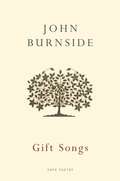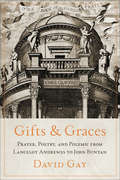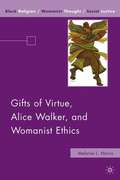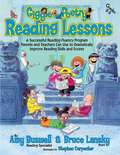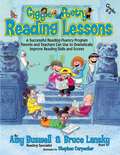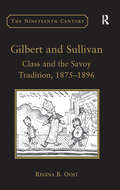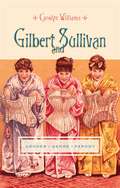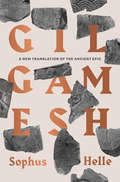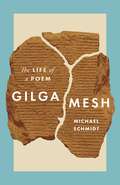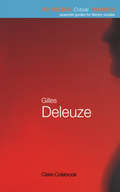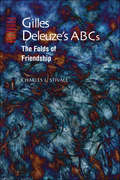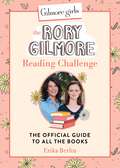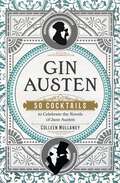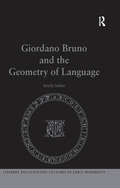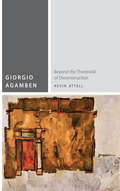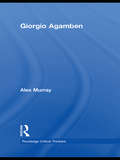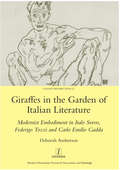- Table View
- List View
Ghostwriter: Shakespeare, Literary Landmines, and an Eccentric Patron's Royal Obsession
by Lawrence WellsPart literary mystery, part an examination of what constitutes fiction versus reality, Ghostwriter is based on the true story of author Lawrence Wells, then 45, hired by the University of Mississippi in 1987 to ghostwrite a novel for a wealthy, eccentric donor (“Mrs. F,” then 75), who was convinced that Edward de Vere, 17th Earl of Oxford, was William Shakespeare. Believing herself to be the reincarnation of Queen Elizabeth I, Mrs. F treated ghostwriter Wells as a “captive” Edward de Vere.Their roller-coaster literary collaboration dramatized Elizabeth and de Vere’s romance, which according to legend produced a son (Henry Wriothesley) born in secret. Henry grew up to become the 3rd Earl of Southampton, who is universally acknowledged as “The Fair Youth” of Shakespeare’s sonnets and whose real-life descendants include Princess Diana and her sons, Prince Harry and William, Prince of Wales.Wells and his late wife, Dean Faulkner Wells, niece of William Faulkner, traveled to England to research the life of Edward de Vere and interview proponents of the Shakespeare authorship debate. That summer, London tabloids headlined the royal breakup of Prince Charles and Princess Diana, incidentally echoing Wells and Mrs. F’s tempestuous love story about Edward de Vere and Queen Elizabeth I.Flashbacks weave several elements together—the seventeenth-century mystery of Queen Elizabeth’s “royal bastard,” Wells’s evolving relationship with his eccentric patron, his search for the “real” Shakespeare, and the bawdy Elizabethan narrative he composed for his benefactor. The stories merge, leading to a surprising conclusion.
Giants in the Earth (SparkNotes Literature Guide Series)
by SparkNotesGiants in the Earth (SparkNotes Literature Guide) by O.E. Rolvaag Making the reading experience fun! Created by Harvard students for students everywhere, SparkNotes is a new breed of study guide: smarter, better, faster.Geared to what today's students need to know, SparkNotes provides:chapter-by-chapter analysis explanations of key themes, motifs, and symbols a review quiz and essay topics Lively and accessible, these guides are perfect for late-night studying and writing papers.
Gift Songs
by John BurnsideTo the Shakers, a good song was a gift; indeed the test of a song's goodness was how much of a gift it was. In their call to 'labour to make the way of God your own', Shaker artists expressed an aesthetic that had much in common with the old Japanese notion, attributed to Hokusai, that to paint bamboo, one had first to become bamboo. In his tenth collection, John Burnside begins with an interrogation of the gift song, treating matters of faith and connection, the community of living creatures and the idea of a free church - where faith is placed, not in dogma or a possible credo, but in the indefinable - and moves on through explorations of time and place, towards a tentative and idiosyncratic re-ligere, the beginnings of a renewal of the connection to, and faith in, an ordered world. The book closes with a series of meditations on place, entitled 'Four Quartets', intended both as a spiritual response to the string quartets of Bartók and Britten (as Eliot's were to Beethoven's late quartets), and as an experiment in the poetic form that the finest of poets, the true miglior fabbro, chose as a medium for his own declaration of faith. The poems in this collection are true gifts: thrillingly beautiful, charged with power and mystery, each imbued with the generous skills of a master of his craft.
Gifts and Graces: Prayer, Poetry, and Polemic from Lancelot Andrewes to John Bunyan
by David GayPrayer divided seventeenth-century England. Anglican Conformists such as Lancelot Andrewes and Jeremy Taylor upheld set forms of prayer in the Book of Common Prayer, a book designed to unite the nation in worship. Puritan Reformers and Dissenters such as John Milton and John Bunyan rejected the prayer book and advocated for extemporaneous or free prayer. In 1645, the mainly Puritan Long Parliament proscribed the Book of Common Prayer and dismantled the Anglican Church in the midst of civil war. This led Anglican poets and liturgists to defend their tradition with energy and erudition in print. In 1662, with monarchy restored, the mainly Anglican Cavalier Parliament reinstated the Church and its prayer book to impose religious uniformity. This galvanized English Nonconformity and Dissent and gave rise to a vibrant literary counter-tradition. Addressing this fascinating history, David Gay examines competing claims to spiritual gifts and graces in polemical texts and their influence on prayer and poetry. Amid the contention of differing voices, the disputed connection of poetry and prayer, imagination and religion, emerges as a central tension in early modern literature and culture.
Gifts of Virtue, Alice Walker, and Womanist Ethics
by Melanie L. HarrisMelanie L. Harris dives into the spirituality and life work of Alice Walker, literary genius and poet. Through the lens of Womanist ethics, Harris takes an inside look into the virtues and values that can be lifted from a study of Walker s non-fiction work. This work enlivens the debate in African and African American religious thought about the fluidity of spirituality and widens the conversation to encourage readers to embrace religious traditions inclusive of and beyond Christianity as the foundations for empowerment of both women and ethical values.
Giggle Poetry Reading Lessons Sample: A Successful Reading-Fluency Program Parents and Teachers Can Use to Dramatically Improve Reading Skills and Scores
by Bruce Lansky Stephen Carpenter Amy BuswellSample Lesson from Amy Buswell and Bruce Lansky's Giggle Poetry Reading Lessons! Turn struggling readers into happy readers — For Grades 2–5.This sample lesson and introduction from Giggle Poetry Reading Lessons provides the research and methodology behind the most entertaining fluency intervention ever! As well as a kid-tested poem, customized reading lesson, an off-the-wall illustration, and zany performance tips—all designed to make the process of reading more like fun than work! Perfect for teachers and parents who want to help children improve their reading. Check out the full version of Giggle Poetry Reading Lessons available in softcover and eBook for the full lesson plan.
Giggle Poetry Reading Lessons: A Successful Reading-Fluency Program Parents and Teachers Can Use to Dramatically Improve Reading Skills and Scores
by Bruce Lansky Stephen Carpenter Amy BuswellHow Giggle Poetry Reading Lessons Turn Struggling Readers into Happy Readers -- For Grades 2-5.Many struggling readers are embarrassed to read aloud. They are often intimidated or bored by texts that conventional programs require them to practice. So, instead of catching up, they fall further behind. Currently 67% of American fourth graders can't read grade-level text. Reading specialist Amy Buswell has spent eight years looking for remediation methods that work. "What is needed," Buswell explains, "is a program that improves the motivation of struggling readers, because that accounts for 90% of the problem." Four years ago, Buswell came up with a brainstorm. She knew her best readers enjoyed reading Bruce Lansky's poetry books for pleasure. The more poems they read, the better their reading got. Why not use Lansky's kid-tested poems as texts struggling readers could practice on to improve their reading--using six research-based strategies: choral reading, echo reading, paired reading, repeated reading, sustained silent reading and "say it like the character" reading. -- This book is the result of that brainstorm and the resulting collaboration between Buswell and Lansky. It gives teachers and parents everything they need to help children improve their reading: -35 kid-tested poems by Bruce Lansky -35 customized reading lessons by Amy Buswell -35 off-the-wall illustrations by Stephen Carpenter -35 sets of zany performance tips by Bruce Lansky ...all of which is designed to make the process of reading improvement more like fun than work. -- What Amy Buswell and Bruce Lansky have created is the most entertaining fluency intervention ever. That's why it is so successful at overcoming negative attitudes to improve reading skills and scores. Ninety-five percent of participating students made significant improvement in their fluency (reading rate). And average reading scores on the Florida Comprehensive Assessment Test (FCAT) for Buswell's school raised her school's rating to an A for the first time. In 2011, Buswell's school achieved one of the highest-percentage reading gains in the county. -- There's no reason parents can't get in on the fun, too. Parents will enjoy Lansky's funny poems and Stephen Carpenter's delightful illustrations as much as their children. By reading the poems with their children and encouraging their children to try some of Lansky's entertaining performance tips (by adding gestures, sound effects, props and finding additional readers: be they friends, family or neighbors), they can dramatically speed up their child's reading progress (and have lots of fun in the process.)
Gilbert and Sullivan: Class and the Savoy Tradition, 1875-1896 (The Nineteenth Century Series)
by Regina B. OostMaking use of archival resources in the United Kingdom and the United States, Regina B. Oost examines advertisements, promotional materials, and programs, as well as letters, diaries, and account books, to reconstruct the ways in which Richard D'Oyly Carte, W.S. Gilbert, and Arthur Sullivan attracted and shaped the expectations of theatergoers. Her findings place the Savoy operas in the context of other West End productions, considering similarities between Carte's promotional methods and those of managers Henry Irving, John Hollingshead, and Marie and Squire Bancroft. While all of these managers astutely understood patronage of a middle-class audience to be key to their success, the Savoy collaborators made strategic use of circumstances unique to their situation to distinguish Gilbert and Sullivan operas from contemporary theatrical fare. From Trial by Jury (1875) through The Grand Duke (1896), the Savoy operas celebrated the commodity culture beloved of the urban middle classes, validated a moral code that secured the social privileges audience members cherished, and ultimately provided a new model of British national identity that replaced the agrarian ideal espoused by earlier generations. Written in admirably accessible and jargon-free prose, Oost's book will appeal to scholars of theater history, literature, music, and popular culture, as well as general readers interested in Gilbert and Sullivan and the history of the D'Oyly Carte Opera Company.
Gilbert and Sullivan: Gender, Genre, Parody
by Carolyn WilliamsLong before the satirical comedy of The Daily Show and The Colbert Report, the comic operas of Gilbert and Sullivan were the hottest send-ups of the day's political and cultural obsessions. Gilbert and Sullivan's productions always rose to the level of social commentary, despite being impertinent, absurd, or inane. Some viewers may take them straight, but what looks like sexism or stereotype was actually a clever strategy of critique. Parody was a powerful weapon in the culture wars of late nineteenth-century England, and with defiantly in-your-face sophistication, Gilbert and Sullivan proved popular culture could be intellectually as well as politically challenging. Carolyn Williams underscores Gilbert and Sullivan's creative and acute understanding of cultural formations. Anxiety drives the troubled mind in the "nightmare" patter song of Iolanthe and is vividly realized in the sexual and economic phrasing of Lord Chancellor's lyrics. The modern body appears automated and performative in the "railway" song of Thespis, mirroring Charlie Chaplin's factory worker in the film, Modern Times. Williams also illuminates the use of magic in The Sorcerer, the parody of nautical melodrama in H.M.S. Pinafore, the ridicule of Victorian poetry in Patience, the autoethnography of The Mikado, the role of gender in Trial by Jury, and the theme of illegitimacy in The Pirates of Penzance.
Gilbert and Sullivan: Gender, Genre, Parody (Gender and Culture Series)
by Carolyn WilliamsLong before the satirical comedy of The Daily Show and The Colbert Report, the comic operas of W. S. Gilbert and Arthur Sullivan were the hottest send-ups of the day's political and cultural obsessions. Gilbert and Sullivan's productions always rose to the level of social commentary, despite being impertinent, absurd, or inane. Some viewers may take them straight, but what looks like sexism or stereotype was actually a clever strategy of critique. Parody was a powerful weapon in the culture wars of late-nineteenth-century England, and with defiantly in-your-face sophistication, Gilbert and Sullivan proved that popular culture can be intellectually as well as politically challenging.Carolyn Williams underscores Gilbert and Sullivan's creative and acute understanding of cultural formations. Her unique perspective shows how anxiety drives the troubled mind in the Lord Chancellor's "Nightmare Song" in Iolanthe and is vividly realized in the sexual and economic phrasing of the song's patter lyrics. The modern body appears automated and performative in the "Junction Song" in Thespis, anticipating Charlie Chaplin's factory worker in Modern Times. Williams also illuminates the use of magic in The Sorcerer, the parody of nautical melodrama in H.M.S. Pinafore, the ridicule of Victorian aesthetic and idyllic poetry in Patience, the autoethnography of The Mikado, the role of gender in Trial by Jury, and the theme of illegitimacy in The Pirates of Penzance. With her provocative reinterpretation of these artists and their work, Williams recasts our understanding of creativity in the late nineteenth century.
Gilgamesh (Gods and Heroes of the Ancient World)
by Louise M. PrykeGilgamesh focuses on the eponymous hero of the world’s oldest epic and his legendary adventures. However, it also goes further and examines the significance of the story’s Ancient Near Eastern context, and what it tells us about notions of kingship, animality, and the natures of mortality and immortality. In this volume, Louise M. Pryke provides a unique perspective to consider many foundational aspects of Mesopotamian life, such as the significance of love and family, the conceptualisation of life and death, and the role of religious observance. The final chapter assesses the powerful influence of Gilgamesh on later works of ancient literature, from the Hebrew Bible, to the Odyssey, to The Tales of the Arabian Nights, and his reception through to the modern era. Gilgamesh is an invaluable tool for anyone seeking to understand this fascinating figure, and more broadly, the relevance of Near Eastern myth in the classical world and beyond.
Gilgamesh (SparkNotes Literature Guide Series)
by SparkNotesGilgamesh (SparkNotes Literature Guide) Making the reading experience fun! Created by Harvard students for students everywhere, SparkNotes is a new breed of study guide: smarter, better, faster.Geared to what today's students need to know, SparkNotes provides:chapter-by-chapter analysis explanations of key themes, motifs, and symbols a review quiz and essay topics Lively and accessible, these guides are perfect for late-night studying and writing papers.
Gilgamesh among Us: Modern Encounters with the Ancient Epic
by Theodore ZiolkowskiThe world's oldest work of literature, the Epic of Gilgamesh recounts the adventures of the semimythical Sumerian king of Uruk and his ultimately futile quest for immortality after the death of his friend and companion, Enkidu, a wildman sent by the gods. Gilgamesh was deified by the Sumerians around 2500 BCE, and his tale as we know it today was codified in cuneiform tablets around 1750 BCE and continued to influence ancient cultures—whether in specific incidents like a world-consuming flood or in its quest structure—into Roman times. The epic was, however, largely forgotten, until the cuneiform tablets were rediscovered in 1872 in the British Museum's collection of recently unearthed Mesopotamian artifacts. In the decades that followed its translation into modern languages, the Epic of Gilgamesh has become a point of reference throughout Western culture.In Gilgamesh among Us, Theodore Ziolkowski explores the surprising legacy of the poem and its hero, as well as the epic’s continuing influence in modern letters and arts. This influence extends from Carl Gustav Jung and Rainer Maria Rilke's early embrace of the epic's significance—"Gilgamesh is tremendous!" Rilke wrote to his publisher's wife after reading it—to its appropriation since World War II in contexts as disparate as operas and paintings, the poetry of Charles Olson and Louis Zukofsky, novels by John Gardner and Philip Roth, and episodes of Star Trek: The Next Generation and Xena: Warrior Princess. Ziolkowski sees fascination with Gilgamesh as a reflection of eternal spiritual values—love, friendship, courage, and the fear and acceptance of death. Noted writers, musicians, and artists from Sweden to Spain, from the United States to Australia, have adapted the story in ways that meet the social and artistic trends of the times. The spirit of this capacious hero has absorbed the losses felt in the immediate postwar period and been infused with the excitement and optimism of movements for gay rights, feminism, and environmental consciousness. Gilgamesh is at once a seismograph of shifts in Western history and culture and a testament to the verities and values of the ancient epic.
Gilgamesh: A New Translation of the Ancient Epic
by Sophus HelleA poem for the ages, freshly and accessibly translated by an international rising star, bringing together scholarly precision and poetic graceGilgamesh is a Babylonian epic from three thousand years ago, which tells of King Gilgamesh&’s deep love for the wild man Enkidu and his pursuit of immortality when Enkidu dies. It is a story about love between men, loss and grief, the confrontation with death, the destruction of nature, insomnia and restlessness, finding peace in one&’s community, the voice of women, the folly of gods, heroes, and monsters—and more. Millennia after its composition, Gilgamesh continues to speak to us in myriad ways. Translating directly from the Akkadian, Sophus Helle offers a literary translation that reproduces the original epic&’s poetic effects, including its succinct clarity and enchanting cadence. An introduction and five accompanying essays unpack the history and main themes of the epic, guiding readers to a deeper appreciation of this ancient masterpiece.
Gilgamesh: The Life of a Poem
by Michael SchmidtReflections on a lost poem and its rediscovery by contemporary poetsGilgamesh is the most ancient long poem known to exist. It is also the newest classic in the canon of world literature. Lost for centuries to the sands of the Middle East but found again in the 1850s, it tells the story of a great king, his heroism, and his eventual defeat. It is a story of monsters, gods, and cataclysms, and of intimate friendship and love. Acclaimed literary historian Michael Schmidt provides a unique meditation on the rediscovery of Gilgamesh and its profound influence on poets today.Schmidt describes how the poem is a work in progress even now, an undertaking that has drawn on the talents and obsessions of an unlikely cast of characters, from archaeologists and museum curators to tomb raiders and jihadis. Fragments of the poem, incised on clay tablets, were scattered across a huge expanse of desert when it was recovered in the nineteenth century. The poem had to be reassembled, its languages deciphered. The discovery of a pre-Noah flood story was front-page news on both sides of the Atlantic, and the poem's allure only continues to grow as additional cuneiform tablets come to light. Its translation, interpretation, and integration are ongoing.In this illuminating book, Schmidt discusses the special fascination Gilgamesh holds for contemporary poets, arguing that part of its appeal is its captivating otherness. He reflects on the work of leading poets such as Charles Olson, Louis Zukofsky, and Yusef Komunyakaa, whose own encounters with the poem are revelatory, and he reads its many translations and editions to bring it vividly to life for readers.
Gilles Deleuze (Routledge Critical Thinkers)
by Claire ColebrookWhy think? Not, according to Gilles Deleuze, in order to be clever, but because thinking transforms life. Why read literature? Not for pure entertainment, Deleuze tells us, but because literature can recreate the boundaries of life. With his emphasis on creation, the future and the enhancement of life, along with his crusade against 'common sense', Deleuze offers some of the most liberating, exhilarating ideas in twentieth-century thought. This book offers a way in to Deleuzean thought through such topics as:* 'becoming'* time and the flow of life* the ethics of thinking* 'major' and 'minor' literature* difference and repetition* desire, the image and ideology.Written with literature students in mind, this is the ideal guide for students wishing to think differently about life and literature and in this way to create their own new readings of literary texts.
Gilles Deleuze's ABCs: The Folds of Friendship (Parallax: Re-visions of Culture and Society)
by Charles J. StivaleFriendship, in its nature, purpose, and effects, has been an important concern of philosophy since antiquity. It was of particular significance in the life of Gilles Deleuze, one of the most original and influential philosophers of the late twentieth century. Taking L'Abécédaire de Gilles Deleuze—an eight-hour video interview that was intended to be aired only after Deleuze's death—as a key source, Charles J. Stivale examines the role of friendship as it appears in Deleuze's work and life.Stivale develops a zigzag methodology practiced by Deleuze himself to explore several concepts as they relate to friendship and to discern how friendship shifts, slips, and creates movement between Deleuze and specific friends. The first section of this study discusses the elements of creativity, pedagogy, and literature that appear implicitly and explicitly in his work. The second section focuses on Deleuze's friendships with Michel Foucault, Jacques Derrida, Claire Parnet, and Félix Guattari and reveals his conception of friendship as an ultimately impersonal form of intensity that goes beyond personal relationships.Stivale's analysis offers an intimate view into the thought of one of the greatest thinkers of our time.
Gilmore Girls: The Official Guide to All the Books
by Erika BerlinWelcome to the ultimate TBR list! With meticulously researched book descriptions and hundreds of guided prompts and reading tips, The Rory Gilmore Reading Challenge is an officially licensed, one-of-a-kind fan's guide to the Gilmore Girls universe and all 339 books referenced in the series. For fans of Gilmore Girls, one of the most dedicated ways to tap into the psyche of Rory Gilmore is committing to one Herculean task: The Rory Gilmore Reading Challenge. Over the course of seven seasons, Rory Gilmore and her fellow Stars Hollow residents were seen reading or referencing 339 books. Now you can read along with Rory! This book is a distillation of those zealous inventories and is meant to make you fall back in love with Gilmore Girls all over again. Challenge yourself to reading the 300+ books from the series and exploring hundreds of guided prompts about each selection. Included in this first-ever officially licensed reading challenge companion are thought starters and prompts pertaining to the books seen, mentioned, and referenced over the series&’ seven-season run. This compendium has been carefully researched and is more thorough and verified than any other Rory Gilmore reading list that has been compiled. Whether you choose to start from the very beginning or dive into a particular character&’s literary favorites, you&’ll find a reading guide within. You'll also find helpful information for organizing your TBR collection, tips for maximizing your reading time and becoming a more mindful reader, secrets for reading multiple books at once, and an essential episode guide index with checkboxes. And if any part of the challenge feels daunting, take a bit of advice from the bibliophile queen herself: &“I just take a book with me everywhere,&” Rory once said. &“It&’s a habit.&”
Gimson's Pronunciation of English (8th Edition)
by Alan Cruttenden<p>Since its first publication in 1962, Gimson’s Pronunciation of English has been the essential reference book for anyone studying or teaching the pronunciation of English. <p>This eighth edition has been updated to describe General British (GB) as the principal accent, rather than RP, and the accompanying transcriptions have been brought into line with recent changes in pronunciation. This latest edition also includes completely rewritten chapters on the history of the language and the emergence of a standard, alongside a justification for the change from RP to GB. <p>A further bonus to this important text is its extensive and attractive new Companion Website (www.routledge.com/cw/cruttenden), which now includes moment-by-moment commentaries on videos showing the articulation of all GB consonants and vowels in spoken phrases, as well as cross-referencing between the book and these videos. The Companion Website also includes new recordings of Old English, Middle English, and Early Modern English, and features links to recordings of recent and current GB with comments and transcriptions. <p>Comprehensive yet accessible, Gimson’s Pronunciation of English remains the indispensable reference book for anyone for anyone with an interest in English phonetics.</p>
Gin Austen: 50 Cocktails to Celebrate the Novels of Jane Austen - A Cocktail Book
by Colleen MullaneyIt is a truth universally acknowledged that a person in possession of this good book must be in want of a drink.Winner of the Gourmand Award in the Gin category (US). In six enduring novels, Jane Austen captured the fancies and foibles of Regency England, and every delightful page of this book celebrates the picnics, luncheons, dinner parties, and glamorous balls of Austen&’s world. At these social engagements, gossip reigned, love flourished, and drinks flowed. Discover an exotic world of cobblers, crustas, flips, punches, shrubs, slings, sours, and toddies, with recipes that evoke the past but suit today&’s tastes. Raise your glass to Sense and Sensibility with a Brandon Old-Fashioned, Elinorange Blossom, Hot Barton Rum, or Just a Dashwood. Toast Pride and Prejudice with a Cousin Collins, Fizzy Miss Lizzie, Gin & Bennet, or Salt & Pemberley. Brimming with enlightening quotes from the novels and Austen&’s letters, beautiful photographs, and period design, this intoxicating volume is a must-have for any devoted Janeite.
Ginsberg: A Biography
by Barry MilesBarry Miles has accounted the life of one of the most extraordinary poets. Drawing on his long literary association with Ginsberg, as well as on the poet's journals and correspondence, he presents an account of a controversial life.
Giordano Bruno and the Geometry of Language (Literary and Scientific Cultures of Early Modernity)
by Arielle SaiberGiordano Bruno and the Geometry of Language brings to the fore a sixteenth-century philosopher's role in early modern Europe as a bridge between science and literature, or more specifically, between the spatial paradigm of geometry and that of language. Arielle Saiber examines how, to invite what Bruno believed to be an infinite universe-its qualities and vicissitudes-into the world of language, Bruno forged a system of 'figurative' vocabularies: number, form, space, and word. This verbal and symbolic system in which geometric figures are seen to underlie rhetorical figures, is what Saiber calls 'geometric rhetoric.' Through analysis of Bruno's writings, Saiber shows how Bruno's writing necessitates a crafting of space, and is, in essence, a lexicon of spatial concepts. This study constitutes an original contribution both to scholarship on Bruno and to the fields of early modern scientific and literary studies. It also addresses the broader question of what role geometry has in the formation of any language and literature of any place and time.
Giorgio Agamben: Beyond the Threshold of Deconstruction (Commonalities)
by Kevin AttellAgamben’s thought has been viewed as descending primarily from the work of Heidegger, Benjamin, and, more recently, Foucault. This book complicates and expands that constellation by showing how throughout his career Agamben has consistently and closely engaged (critically, sympathetically, polemically, and often implicitly) the work of Derrida as his chief contemporary interlocutor.The book begins by examining the development of Agamben’s key concepts—infancy, Voice, potentiality—from the 1960s to approximately 1990 and shows how these concepts consistently draw on and respond to specific texts and concepts of Derrida. The second part examines the political turn in Agamben’s and Derrida’s thinking from about 1990 onward, beginning with their investigations of sovereignty and violence and moving through their parallel treatments of juridical power, the relation between humans and animals, and finally messianism and the politics to come.
Giorgio Agamben: Law, Literature, Life (Routledge Critical Thinkers)
by Alex MurrayGiorgio Agamben is one of the most important and controversial figures in contemporary continental philosophy and critical theory. His work covers a broad array of topics from biblical criticism to Guantanamo Bay and the ‘war on terror’. Alex Murray explains Agamben’s key ideas, including: an overview of his work from first publication to the present clear analysis of Agamben’s philosophy of language and life theories of ethics and ‘witnessing’ the relationship between Agamben’s political writing and his work on aesthetics and poetics. Investigating the relationship between politics, language, literature, aesthetics and ethics, this guide is essential reading for anyone wishing to understand the complex nature of modern political and cultural formations.
Giraffes in the Garden of Italian Literature: Modernist Embodiment in Italo Svevo, Federigo Tozzi and Carlo Emilio Gadda
by Deborah Amberson"Writing in 1926, Carlo Emilio Gadda (1893-1973) acknowledges his peculiarity within the Italian literary field by describing himself as a giraffe or a kangaroo in Italy's beautiful garden of literature. Gadda's self-characterization as exotic and even ungainly animal applies in equal measure to Italo Svevo (1861-1928) and Federigo Tozzi (1883-1920), authors who, like Gadda, thwarted efforts at critical classification. Yet the ostensible strangeness of these three Italian authors is diminished when their writing is considered within the framework of modernism, a label traditionally avoided by the Italian critical establishment. Indeed, within a modernism preoccupied with human embodiment, these Italian literary giraffes find their kin. Here, the central nexus of body, subjectivity and style that informs and binds the writing of Svevo, Tozzi and Gadda resonates with a modernist renegotiation and revalorization of a human body whose dignity and epistemological authority have been contested by social and technological modernity."


